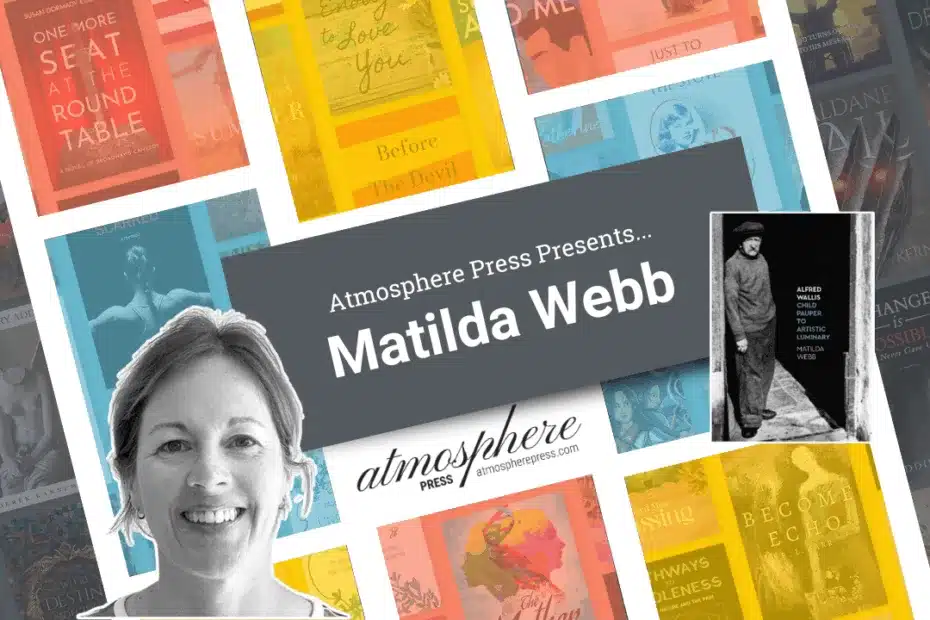An Interview with Matilda Webb

Ever since she could hold a book, Matilda has loved reading, and when she met Roald Dahl at the age of seven, she was completely spellbound. That magical encounter planted a seed: one day, she would be a writer too.
As a teenager, Matilda divided her time between galloping across fields on horseback, getting lost in books, and scribbling down her own stories. She went on to study archaeology at university, which led to muddy adventures on digs around the world. Eventually, she returned to the UK, swapping trenches for museum galleries, all while continuing to write.
Matilda’s fiction is steeped in the past, from rebellious Roman teens to the quiet mysteries surrounding Stonehenge. But her latest book, Alfred Wallis: Child Pauper to Artistic Luminary, takes her in a bold new direction—into biography. Long fascinated by real lives, she was irresistibly drawn to Alfred’s remarkable story: a self-taught artist who rose from poverty to become a key figure in British Modern Art. His life was too extraordinary not to explore—and too important not to share. The book is available now at www.alfredwallis.co.uk.
What inspired you to start writing this book?
I was first drawn to Alfred Wallis for his distinctive paintings, but with my background in historical research, on discovering more about his story I knew there was a really important and compelling human story to tell. Here was a man who endured profound hardship—child poverty, hard manual labour, and personal loss—yet in later life he began painting with a raw, instinctive brilliance that would go on to influence the course of British Modern Art.
Tell us the story of your book’s current title. Was it easy to find, or did it take forever?
The title, Alfred Wallis: Child Pauper to Artistic Luminary, appeared out of nowhere as I learnt more about the terrible conditions Alfred Wallis survived as a child in the slums of Devonport in the 1860s.
Describe your dream book cover.
I love the cover of my book—it is striking and uses austere colours, just like Alfred Wallis did in his paintings. The photograph of Wallis in the doorway of his cottage shows him standing slightly to one side as if he is inviting the reader in to hear his story.
What books are you reading (for research or comfort) as you continue the writing process?
There is a very long bibliography in my book! For the last eight years of research for this project, I have read many fascinating books on art and on social history.
What other professions have you worked in? What’s something about you that your readers wouldn’t know?
My whole life I’ve been fascinated by books, archaeology and museums, and have steered my career to work in all three areas. I also love travel and adventures and lived with nomads in Mongolia for a year.
Who/what made you want to write? Was there a particular person, or particular writers/works/art forms that influenced you?
When I was seven, Roald Dahl came to talk to my class. He asked us lots of questions about books and reading but I was the only one to put my hand up to answer each time. In the break he asked me to carry round a huge bowl of chocolate Maltesers and chatted to me. Afterwards he signed my copy of Charlie and the Chocolate Factory: “To Matilda Love Roald Dahl.” He was my first inspiration and I will never forget that wonderful encounter.
What advice would you give your past self at the start of your writing journey?
The advice I would give myself eight years ago when starting work on my current book, Alfred Wallis: Child Pauper to Artistic Luminary, would be to prepare in advance for the huge burnout that came after it was completed. I was very unprepared for the fatigue and sense of loss that came after the book was completed and launched in May 2025. I am only just recovering!
What’s one thing you hope sticks with readers after they finish your book?
If readers can come away seeing Alfred Wallis’s paintings with fresh eyes—seeing not just the charm but the strength and experience behind them—I’ll feel truly glad.
Are you a writer, too? Submit your manuscript to Atmosphere Press.

Atmosphere Press is a selective hybrid publisher founded in 2015 on the principles of Honesty, Transparency, Professionalism, Kindness, and Making Your Book Awesome. Our books have won dozens of awards and sold tens of thousands of copies. If you’re interested in learning more, or seeking publication for your own work, please explore the links below.
